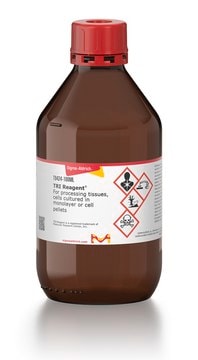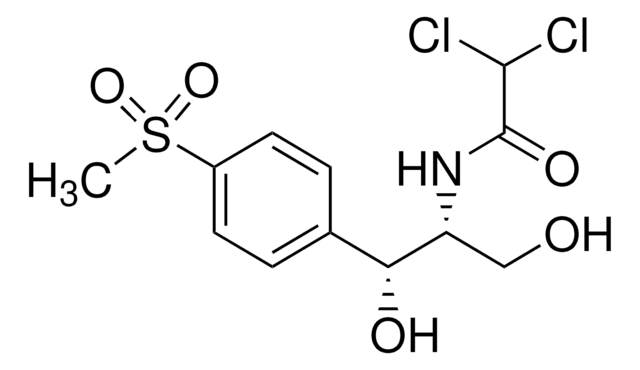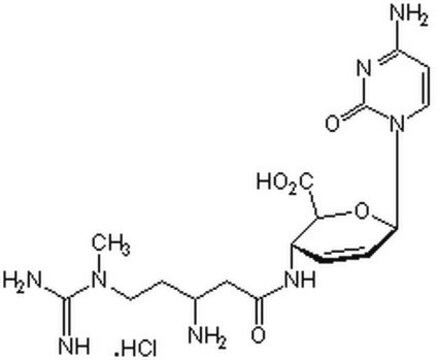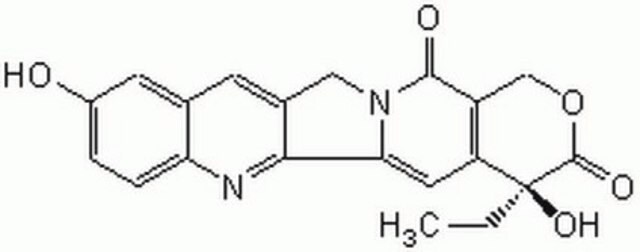598226
Thiostrepton
≥98% (HPLC), powder, FOXM1 inhibitor, Calbiochem®
Synonym(s):
Thiostrepton, FOXM1 Inhibitor I
About This Item
Recommended Products
product name
Thiostrepton, Thiostrepton, CAS 1393-48-2, is an antibiotic that inhibits protein synthesis by preventing binding of GTP to 50S ribosomal subunit.
Quality Level
Assay
≥98% (HPLC)
form
powder
manufacturer/tradename
Calbiochem®
storage condition
OK to freeze
desiccated
protect from light
color
off-white
solubility
DMSO: 10 mg/mL
chloroform: 10 mg/mL
shipped in
ambient
storage temp.
2-8°C
1 of 4
This Item | 342500 | 203350 | 390238 |
|---|---|---|---|
| assay ≥98% (HPLC) | assay ≥98% (TLC) | assay ≥98% (HPLC) | assay ≥95% (HPLC) |
| Quality Level 100 | Quality Level 100 | Quality Level 100 | Quality Level 100 |
| manufacturer/tradename Calbiochem® | manufacturer/tradename Calbiochem® | manufacturer/tradename Calbiochem® | manufacturer/tradename Calbiochem® |
| storage temp. 2-8°C | storage temp. 2-8°C | storage temp. 2-8°C | storage temp. 2-8°C |
| solubility DMSO: 10 mg/mL, chloroform: 10 mg/mL | solubility DMSO: 10 mg/mL, methanol: 5 mg/mL | solubility - | solubility DMSO: 5 mg/mL |
General description
Biochem/physiol Actions
EF-G
Warning
Other Notes
Rosendahl, G. and Douthwaite, S. 1994. Nucleic Acids Res.22, 357.
Saarma, U. and Remme, J. 1992. Nucleic Acids Res.20, 3147.
Malina, H. and Robert-Gero, M. 1992. Appl. Environ. Microbiol.58, 895.
Blanco, G., et al. 1992. Gene112, 59.
Miller, S.P. and Bodley, J.W. 1991. Nucleic Acids Res.19, 1657.
Ryan, P.C., et al. 1991. J. Mol. Biol.221, 1257.
Kutay, U.R., et al. 1990. Biochim. Biophys. Acta1050, 193.
Smokvina, T., et al. 1990. Gene94, 53.
Garrett, R. 1983. Trends Biochem. Sci.8, 189.
Bodley, J.W., et al. 1970. Biochem. Biophys. Res. Commun.41, 1406.
Thompson, J. and Cundliffe, E. 1970. Biochimie 73, 1131.
Legal Information
Storage Class Code
11 - Combustible Solids
WGK
WGK 3
Flash Point(F)
Not applicable
Flash Point(C)
Not applicable
Certificates of Analysis (COA)
Search for Certificates of Analysis (COA) by entering the products Lot/Batch Number. Lot and Batch Numbers can be found on a product’s label following the words ‘Lot’ or ‘Batch’.
Already Own This Product?
Find documentation for the products that you have recently purchased in the Document Library.
Our team of scientists has experience in all areas of research including Life Science, Material Science, Chemical Synthesis, Chromatography, Analytical and many others.
Contact Technical Service










